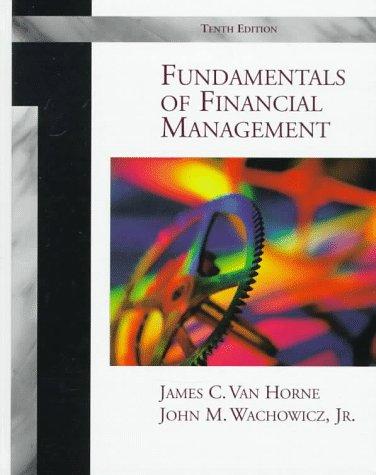Question
You are applying for a 30-year, fixed-rate (APR 6.50%) mortgage loan for a house that sells for $80,000 today. The mortgage bank will ask you
You are applying for a 30-year, fixed-rate (APR 6.50%) mortgage loan for a house that sells for $80,000 today. The mortgage bank will ask you for 20% initial down payment of the house value, and charge you an instant extra $3,000 application closing cost (added into the initial loan balance when the loan is approved at the start, and to be amortized along with the loan later).
(a) What should be your monthly loan payment (assuming payment is due by the end of each month)? Hints: Do NOT simply calculate annual payment and then divide it by 12; you wont get correct monthly payment amount this way. For those loans that require monthly payments, the interest will be compounded month-by-month, so to compute the correct monthly PMT, you should first use monthly rate as RATE per period, months as NPER, etc. In other words, annual interest rate can be divided into monthly rate, # of years can be multiplied into # of months, but $ amounts such as PV, FV and PMT should NOT be multiplied or divided by time periods. (Because of time value of money and compounding effect, those $ amounts occur at different points of time. According to time value of money rule, $ Amounts should NOT be divided or multiplied by time periods if they do not occur at the same point of time altogether.)
(b) 10 years after the house purchase (remember, this is still a monthly mortgage), what will be the remaining principal balance of your loan? Hints: As the beginning principal balance of a loan can be calculated as PV, the remaining (ending) principal balance of a loan can be calculated as FV. But be careful: this is the end of the earlier 10 years = 120 months, not the end of the later 20 years = 240 months.)
PV = Loan + application cost FV120m = ? FV360m = 0
==================================================================
0m 120m 360m
(c) 10 years after the house purchase (as Part b aforementioned), the loan market rate drops from 6.50% APR to 4.50% APR, you want to refinance on the remaining loan principal balance, but the bank will charge you an extra $4,000 refinancing fee (which is carried into the remaining loan balance and then amortized over the rest of loan life). By how much would you be able to lower your monthly loan payment if you choose to refinance over the remaining loan life (i.e., instead of the extension of another 30 years)?
YOU MUST SHOW EXCEL FORMULAS USED
Step by Step Solution
There are 3 Steps involved in it
Step: 1

Get Instant Access to Expert-Tailored Solutions
See step-by-step solutions with expert insights and AI powered tools for academic success
Step: 2

Step: 3

Ace Your Homework with AI
Get the answers you need in no time with our AI-driven, step-by-step assistance
Get Started


